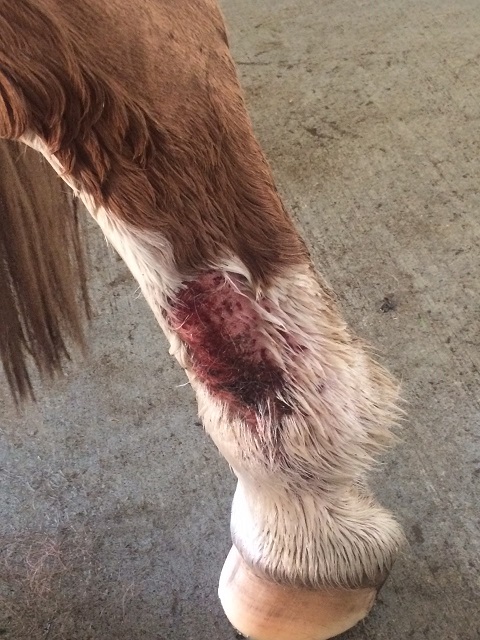
10 Apr Mud Fever: A Case Study On How Farmassist Helped
When the weather begins to turn wet, the chance of your horse or pony developing skin conditions increases. This can be concerning if you don’t know how to handle it or tried everything and nothing is working.
That is why we would love to share with you how we treated a case of mud fever with Farmassist products.
Mud fever & rain scald are fairly common skin conditions that are caused by bacteria or fungi entering the horse’s skin through damaged hair follicles. It causes irritations like dermatitis on the lower limbs of the horse. You can read more about mud fever and other skin conditions here.
Mud Fever Treatment NZ – Case Study
When we first met our pony in September 2016, he had a fairly bad case of mud fever on his front and back legs. Horses with white socks are more commonly affected by mud fever, just like this pony. The first step in curing mud fever is to gently remove the scabs. We removed as many scabs as possible using sunlight soap with warm soapy water and using your fingers or a soft brush to remove the scabs. These images show the pony’s legs after the majority of the scabs have been removed on 13th September. Don’t panic if you can’t get near to remove them all, just continue the following procedure:
Treatment Begins: 13th September

13th September – Front Legs

13th September – Back Leg
The next step is to wash your pony’s legs with Farmassist Antibacterial Wash. Dilute Farmassist Wash in a bucket of warm or cold water and saturate the affected areas. Or, if you are using the Farmassist Antibacterial Healing Spray, spray it on to the affected areas. Do not wash it off, leave it on the horse’s skin. In the images below, Farmassist Wash was used and then the pony’s legs were wrapped for two days due to heavy rain.
Treatment Continues: 19th September
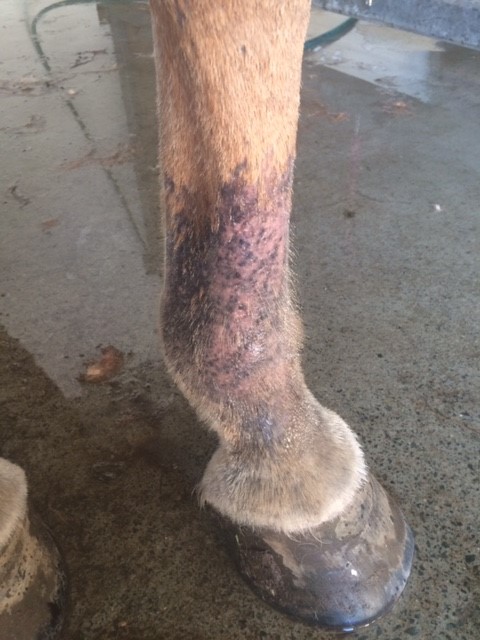
19th September – Front Leg
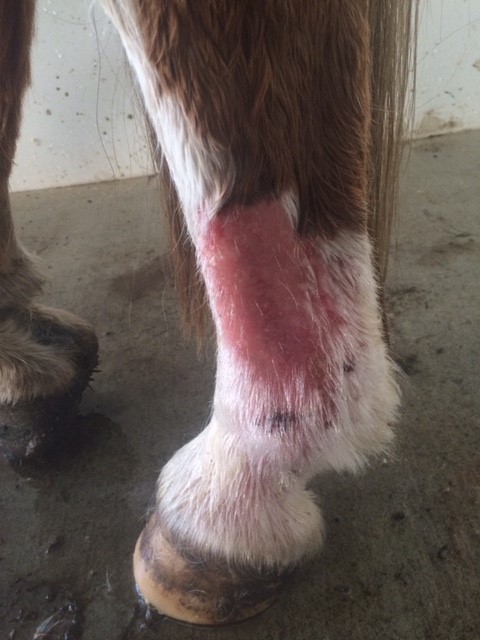
19th September – Back Leg
To ensure a speedy recovery, wash and dry your horse’s legs routinely. Then, continue to apply Farmassist Antibacterial Healing Spray or Farmassist Antibacterial Wash. Remember not to wash Farmassist products off your horse. Clipping can help speed up the healing process, but is not necessary. Make sure that you apply sunblock to horse’s with white socks to prevent sunburn on the new, healing skin. Apply the sunblock after using Farmassist.
Results Starting to Show: 26th September

26th September – Front Leg
The below images show the pony’s leg, after only 3 weeks of treating with Farmassist. As you can see, the irritation has healed and the hair is beginning to grow back.
Look at the difference: 6th October
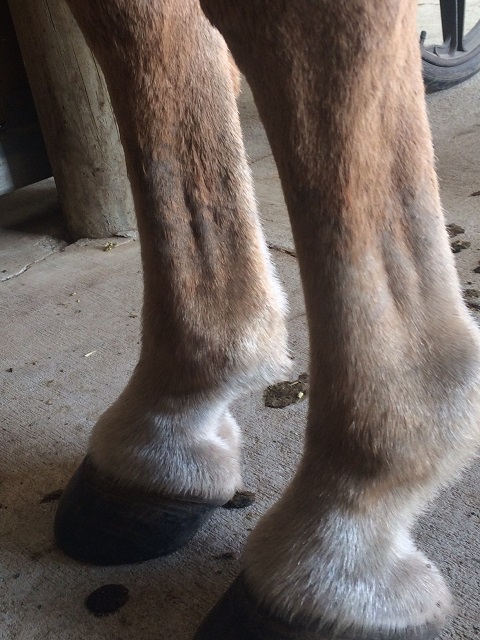
6th October – Front Legs healed

6th October – back legs healed
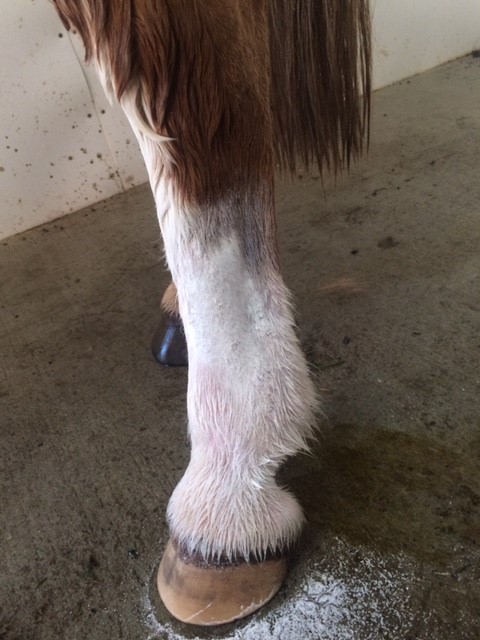
13th October – Back Leg, sunblock powder has been applied.
Preventing Mud Fever
Using Farmassist Antibacterial Healing Spray and, or diluted Farmassist Antibacterial Wash throughout autumn and winter will help to prevent your horse or pony from contracting mud fever or rain scald. Taking preventative measures in the first years will mitigate mud fever from developing down the track. During the wetter months, it is vital to keep a watchful eye over your horse or pony for signs of bacteria and fungi. A little painful scab can develop into a leg full of really painful scabs quite quickly.
Keep your horse and its equipment clean and free from germs by using Farmassist Antibacterial Wash all year round.
If you have any concerns about the health of your horse or pony, then speak with your vet.



Sorry, the comment form is closed at this time.